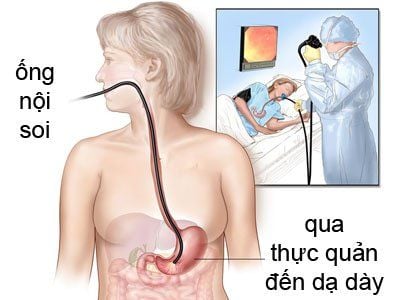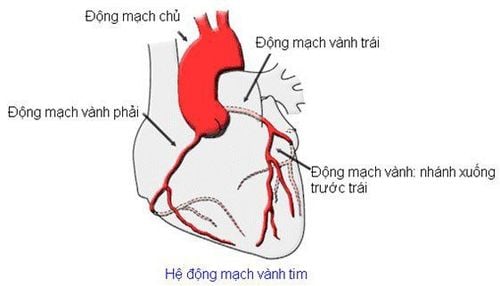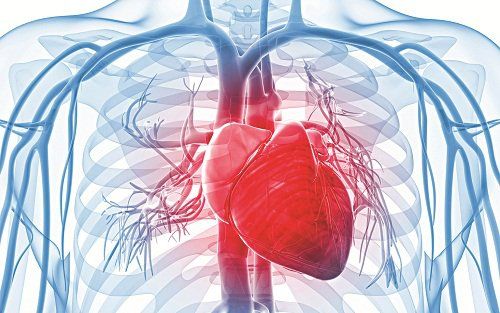This is an automatically translated article.
The article is professionally consulted by Master, Doctor Tran Hong Nhat - Interventional Cardiologist - Cardiovascular Center - Vinmec Central Park International General Hospital. The doctor has more than 10 years of experience in examining and treating interventional cardiovascular diseases.Chest pain is a health phenomenon that occurs in many people, but few people notice when there are mild symptoms. However, if chest pain is severe and frequent, you should see a doctor for a health evaluation.
1. What is chest pain?
Chest pain is pain felt in the chest area from shoulder level to above the diaphragm. Symptoms can manifest with many levels, appear suddenly or recur, may be accompanied by other symptoms such as shortness of breath, sweating ... There are many causes of chest pain, including: The cause is serious that can affect life such as lung disease, cardiovascular disease. Therefore, people with chest pain should seek medical attention promptly to control symptoms and related diseases.2. Causes of chest pain
2.1. Myocardial infarction Myocardial infarction occurs due to a blockage of blood vessels that nourish the heart, causing the heart muscle to be damaged due to ischemia. If this condition is not rectified soon, it can be life-threatening.Angina pain is a sign of a heart attack. Patients present with pain in the left chest, the pain is sudden, intense, squeezing pain can spread to the neck or left arm. In addition to chest pain, the patient also had sweating, dizziness, and shortness of breath.
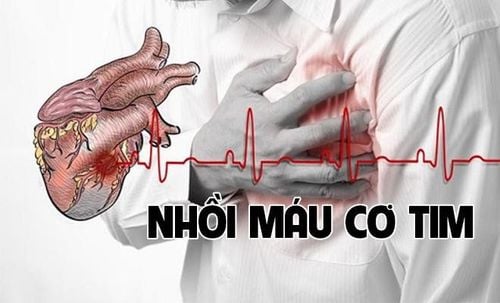
Trắc nghiệm: Bạn hiểu gì về sức khỏe tim mạch?
Bệnh tim không chỉ ảnh hưởng đến nam giới, mà còn là nguyên nhân gây tử vong hàng đầu ở phụ nữ. Các dấu hiệu lên cơn đau tim (nhồi máu cơ tim) của hai giới cũng có thể khác nhau. Cùng làm bài trắc nghiệm sau để xem bạn có chọn đúng những quyết định tốt cho tim hay không?
Bài dịch từ: webmd.com
The following content is prepared under supervision of Bác sĩ chuyên khoa I, Lê Thanh An , Nội Tim mạch , Khoa Khám bệnh & Nội khoa - Bệnh viện Đa khoa Quốc tế Vinmec Nha Trang
Pulmonary embolism can cause sharp symptoms such as stabbing pain in the chest area, pain increases with breathing. The pain is clearly felt in the center of the chest, behind the breastbone. In addition, other accompanying pulmonary embolism symptoms such as dyspnea of varying degrees, hemoptysis, tachycardia, hypotension, and low-grade fever
2.3. Thoracic Aortic Dissection Aortic dissection occurs when there is a tear in the aortic wall, blood flow through the tear dissects the aortic coat and spreads along the path of the artery
Pain Chest pain is the most common symptom of aortic dissection. Chest pain is often severe, stabbing or ripping, piercing through the back, lasting for hours. Sometimes it takes a morphine-type pain reliever to relieve the pain
2.4. Pneumothorax Pneumothorax occurs due to a cause that allows air to escape into the space between the lung and the chest wall. The causes can be complications of pre-existing conditions in the lungs such as COPD, or due to chest trauma from a stabbing, traffic accident...
Pneumothorax causes chest pain on one side of the chest, counting Painful substance like a stabbing knife, pain increases when breathing. The patient has difficulty breathing, the degree of shortness of breath depends on the amount of air that is released.
2.5. Chest wall muscle tension The chest is covered by a layer of surrounding muscle, which is responsible for expanding the chest to make breathing easier. Sometimes, these chest muscles are overstretched, causing pain. Muscle strain often occurs after heavy lifting, stretching or sudden movements, and prolonged coughing. The pain increases with movement and breathing.
2.6. Autonomic Nervous System Disorders Autonomic nervous system dysfunction is a benign disease that affects the patient's life. Causes are often psychological trauma, stress, anxiety disorders, emotional changes ...
Patients often have symptoms of chest pain causing discomfort. These pains are acute or persistent, often accompanied by a feeling of palpitations, palpitations, lightheadedness, and dizziness
2.7. Costochondritis The costal cartilage is the organ that attaches the ribs to the sternum, and the ribs to the collarbone, allowing the rib cage to move while breathing. In costochondritis, the costal cartilages become inflamed causing shortness of breath and pain in the anterior chest area. Pain is sharp in nature, increasing with movement, exertion and deep breathing. The most common site of pain is the sternum and the 5th, 6th, and 7th ribs.
2.8. Gastroesophageal Reflux - Esophagitis Gastroesophageal Reflux - Esophageal condition in which stomach juices back up into the esophagus. Normally, there is a sphincter between the stomach and the esophagus, but for some reason, the sphincter is reduced in ability to work, causing reflux.
Heartburn is the main manifestation of gastroesophageal reflux - oesophagitis. Heartburn is manifested by a burning sensation in the stomach area to the throat. In addition, some other symptoms of gastroesophageal reflux - esophageal reflux such as abdominal pain spreading to the chest area, bloating, sour taste in the mouth, burning pain when swallowing food. In some cases, severe chest pain can be mistaken for a heart attack.
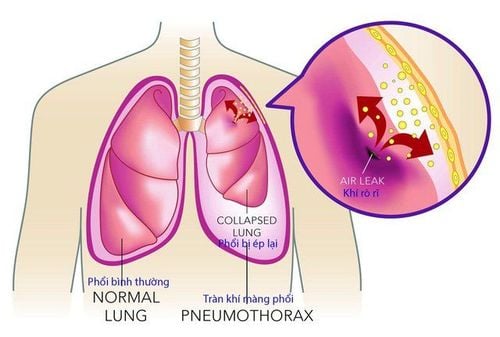
2.10. Pneumonia Pneumonia can occur in one or both lungs. When you have pneumonia, you often feel pain in the right or left chest with a cough and sputum. The pain increases as you breathe. Pneumonia also causes many other symptoms such as shortness of breath, fever, sweating, tremors, chills, nausea, vomiting, and diarrhea.
3. Tests to diagnose the cause of chest pain
3.1 Electrocardiogram An electrocardiogram records the generation and transmission of electrical impulses of the heart muscle. If there are abnormalities, based on the changes on the electrocardiogram can help the doctor diagnose or rule out cardiovascular disease.3.2. Stress ECG Stress ECG helps check for changes in exercise. Sometimes electrocardiographic abnormalities or specific symptoms can only be seen during exercise. Performing an exercise electrocardiogram can be done by cycling or running on a wheelchair.
3.3. Echocardiography An echocardiogram captures dynamic images of the heart and its related structures. Echocardiography helps doctors detect abnormalities in the functioning of the heart caused by ischemia or myocardial infarction.
3.4 Chest X-ray X-ray imaging method can help detect lung lesions such as pneumonia, pleura, pneumothorax... In addition, X-ray helps detect signs suggestive signs for cardiovascular disease such as enlarged heart, mediastinal dilatation, pulmonary congestion ....
3.5. Computed tomography coronary angiography CT coronary angiography is a non-invasive diagnostic technique that uses multi-plane computed tomography with contrast injection to evaluate calcifications, anatomy, and localization. position, degree of coronary artery stenosis. With improved resolution as well as number of slices, coronary CT has high sensitivity and accuracy in diagnosing coronary artery disease.
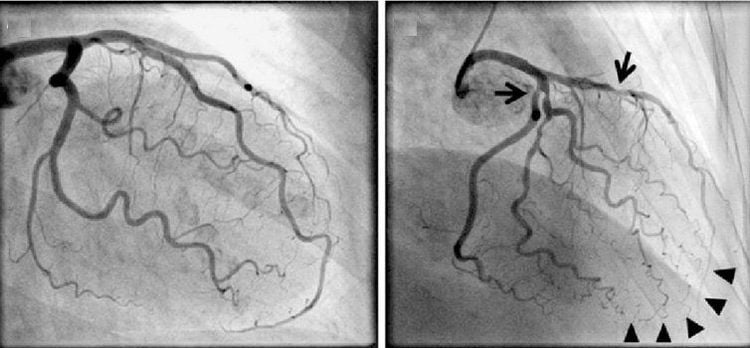
3.7 Selective coronary angiography Coronary angiography is the gold standard for the diagnosis of coronary artery disease, indicated for patients with chest pain thought to be caused by coronary artery disease. Contrast is injected into the coronary artery to visualize the structure of the blood vessel, helping to determine the location and extent of the coronary artery stenosis.
3.8 Blood tests Tests measure the levels of heart markers such as: CK, CK-MB, Troponin to confirm a heart attack. When damaged heart muscle cells release these markers, their levels are abnormally high in the blood as a result.
Another blood test that may be recommended is the D-dimer which detects the breakdown products of a blood clot. Elevated D-dimer tests may raise suspicion of deep vein thrombosis or pulmonary embolism.
When seeing signs of angina, especially unstable angina, the patient should see a doctor to find out the cause of this phenomenon, so that appropriate interventions can be taken. Currently, Cardiovascular Center - Vinmec International General Hospital is one of the leading centers in the country for examination, diagnosis, screening and treatment of cardiovascular diseases. With the convergence of a team of experienced, reputable experts in the field of surgery, internal medicine, interventional cardiac catheterization and the application of advanced techniques in the diagnosis and treatment of diseases. Cardiovascular management, along with a system of modern equipment, on par with the most prestigious hospitals in the world such as: 3 Tesla MRI machine (Siemens), 640 CT machine (Toshiba), other equipment EVIS EXERA III advanced endoscope (Japan Olympiad), Avace high-end anesthesia system, Hybrid operating room according to international standards... The Cardiovascular Center at Vinmec International General Hospital has achieved many successes. work and gain the trust of a large number of patients.
Please dial HOTLINE for more information or register for an appointment HERE. Download MyVinmec app to make appointments faster and to manage your bookings easily.







